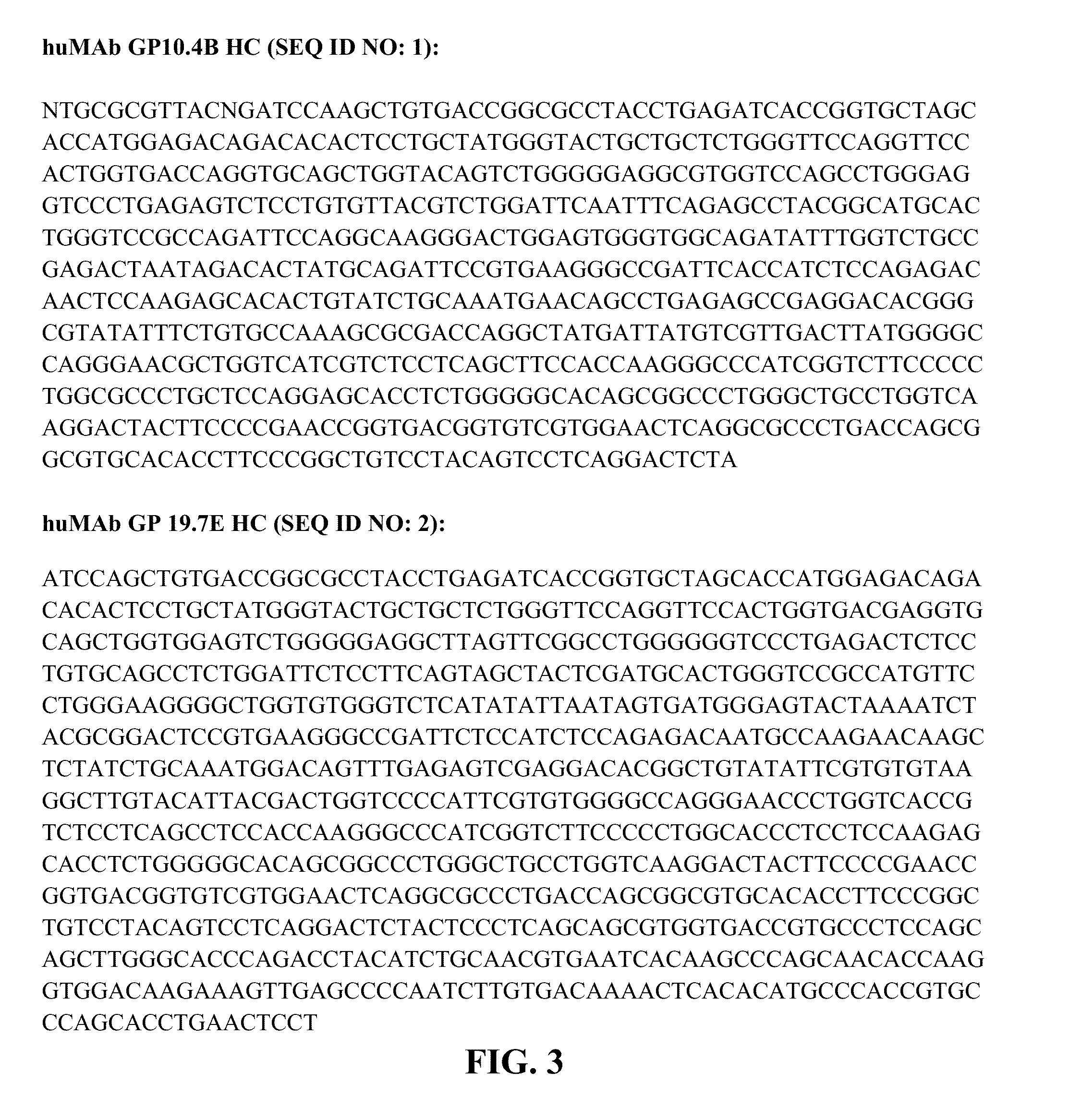Immunoprotective primary mesenchymal stem cells and methods
- Summary
- Abstract
- Description
- Claims
- Application Information
AI Technical Summary
Benefits of technology
Problems solved by technology
Method used
Image
Examples
example 1
Lassa Virus (LASV) Neutralizing Antibodies
[0107]About thirty milliliters of whole blood were collected from confirmed adult Lassa fever (LF) survivors from Sierra Leone no earlier than 8 weeks following discharge from the hospital, and up to several months of convalescence. Peripheral blood mononuclear cells (PBMC) were isolated from the blood samples by Ficoll gradient centrifugation, cryopreserved, and transported in dry shippers to the United States. Cultures of the PBMC were plated at low densities in 96-well plates and stimulated with R848 and interleukin-2 (IL-2) for polyclonal activation of B cells. Supernatants from wells showing colony growth after stimulation were screened for human IgG binding to ELISA plates coated with recombinantly-expressed LASV NP, GPC (GP1+GP2), GP1, or Z proteins. Clones with significant reactivity were expanded, cloned, and re-screened. RNA was isolated from B cell clones producing IgG specific to LASV proteins. Human light chain (LC) and heavy ch...
example 2
Preparation of Immunoprotective Primary MSC Expressing an Anti-LASV Immunoreactive Polypeptide
[0111]Adipose tissue-derived MSC were seeded in 6-well plates at a density of about 1 million cells / well in modified Eagle's medium alpha (MEM alpha) medium supplemented with 10% FBS. The following day, cells were transfected with either LIPOFECTAMINE 2000 (Invitrogen) or PEI (Polyplus) and a pCMVintA—17HSD:huMAb 19.7E construct according to manufacturer recommendations: Light and Heavy chain antibody genes from huMAbs GP19.7E was re-engineered with optimal Kozak sequences and deconvolved 5′ UTRs, and cloned in a bicistronic mammalian expression vector (FIG. 3, Panel B), in tandem and in opposing orientations. In transiently transfected HEK-293T / 17 cells, the opposing orientation gene constructs resulted in higher secreted antibody levels than from tandem counterparts. An NS0 cell line expressing huMAb GP19.7E was generated by transfection with opposing antibody gene constructs. About 48 ho...
example 3
LASV Protective Immunity Via Administration of Multiple Neutralizing Anti-LASV Antibodies
[0112]To demonstrate the immunotherapeutic activity of anti-LASV IgG huMAbs, outbred guinea pigs were injected with a single dose of approximately 30 mg / Kg and 15 mg / Kg of MAb GP19.7E and MAb GP10.4B, respectively, on the same day as LASV challenge. LASV Josiah was adapted to outbred guinea pigs resulting in a uniformly lethal model by the intraperitoneal (i.p.) route. These outbred guinea pigs displayed clinical signs of the disease similar to those observed in the inbred guinea pigs strain 13 and humans. All control guinea pigs injected with antibody-free diluent succumbed with typical signs of Lassa fever by day 16 of the experiment (FIG. 6). The huMAb-treated guinea pigs were followed to 21 days. None of these huMAb-treated animals died or showed any signs of Lassa fever. These results demonstrate that treatment with this combination of Lassa virus glycoprotein specific huMAbs did not merely...
PUM
| Property | Measurement | Unit |
|---|---|---|
| Fraction | aaaaa | aaaaa |
| Fraction | aaaaa | aaaaa |
| Toxicity | aaaaa | aaaaa |
Abstract
Description
Claims
Application Information
 Login to View More
Login to View More - R&D
- Intellectual Property
- Life Sciences
- Materials
- Tech Scout
- Unparalleled Data Quality
- Higher Quality Content
- 60% Fewer Hallucinations
Browse by: Latest US Patents, China's latest patents, Technical Efficacy Thesaurus, Application Domain, Technology Topic, Popular Technical Reports.
© 2025 PatSnap. All rights reserved.Legal|Privacy policy|Modern Slavery Act Transparency Statement|Sitemap|About US| Contact US: help@patsnap.com



